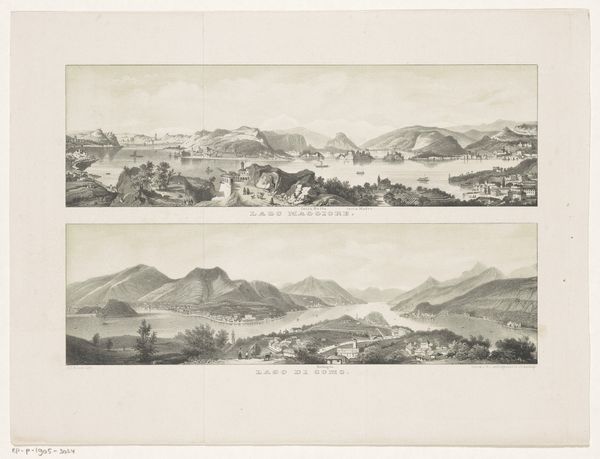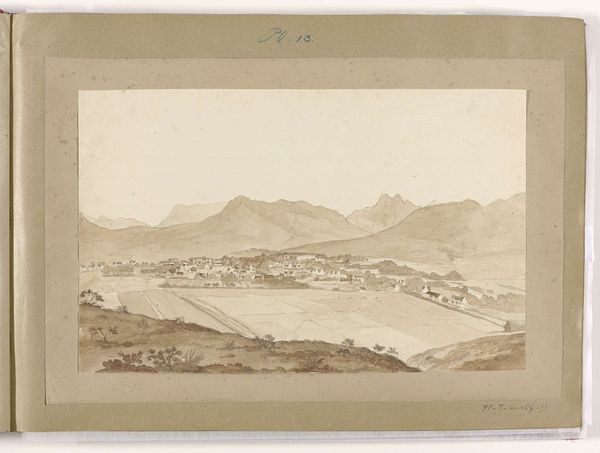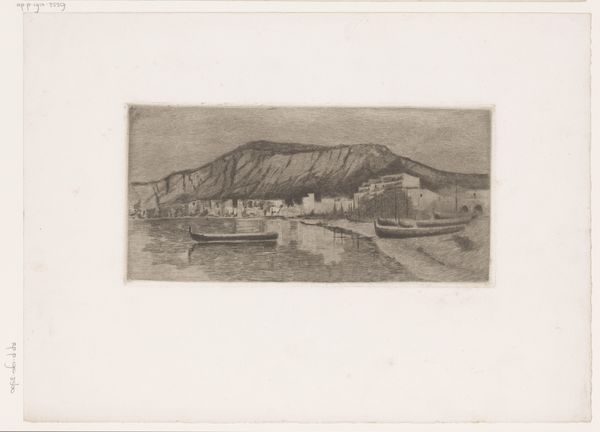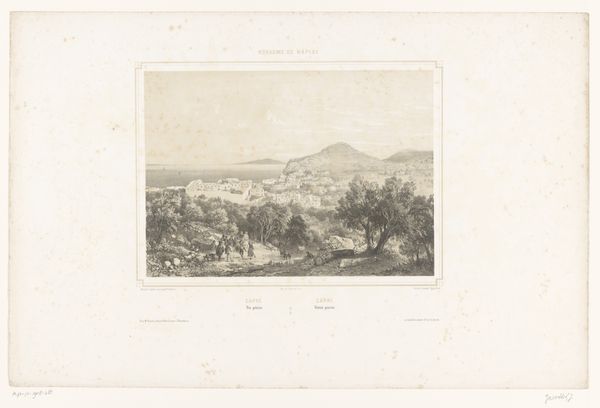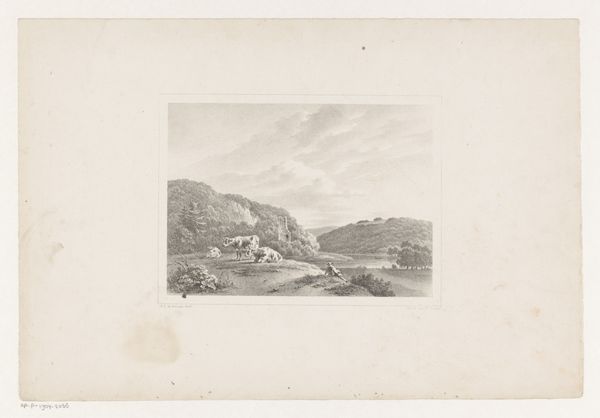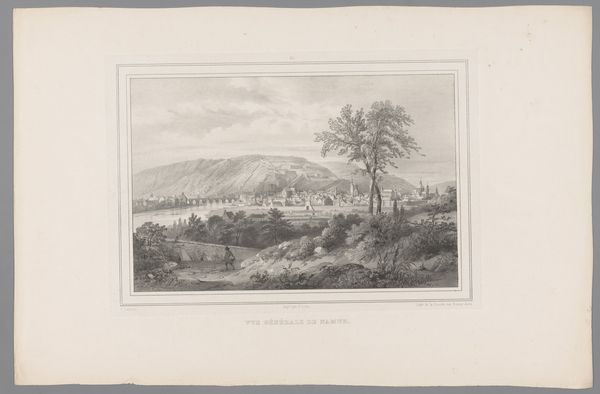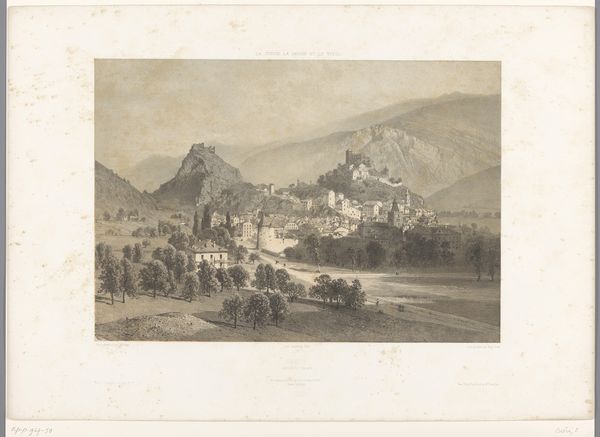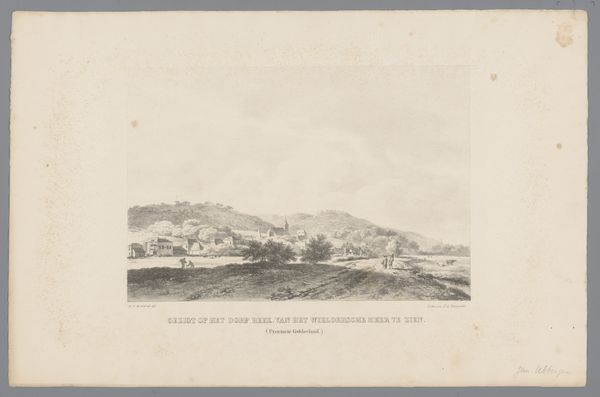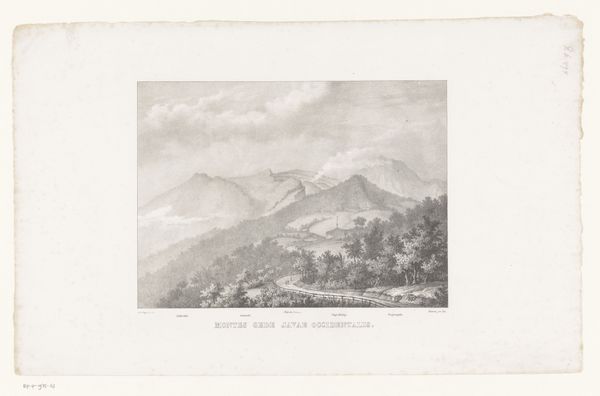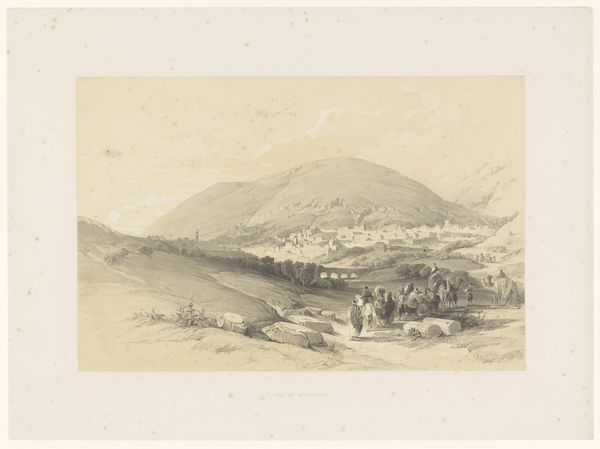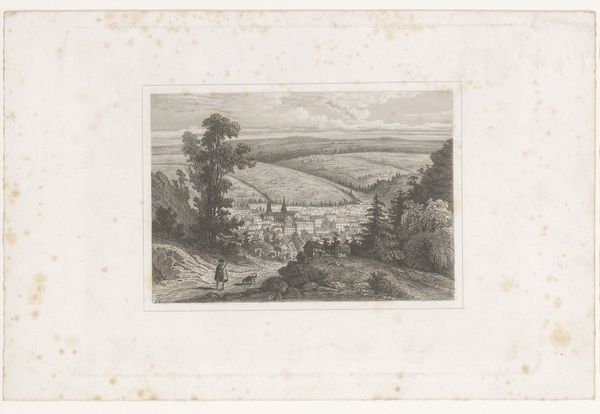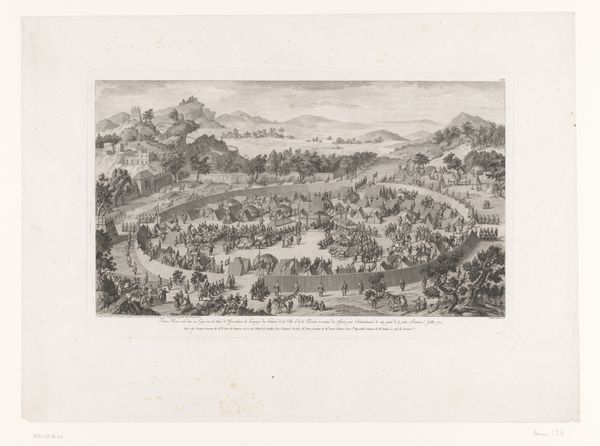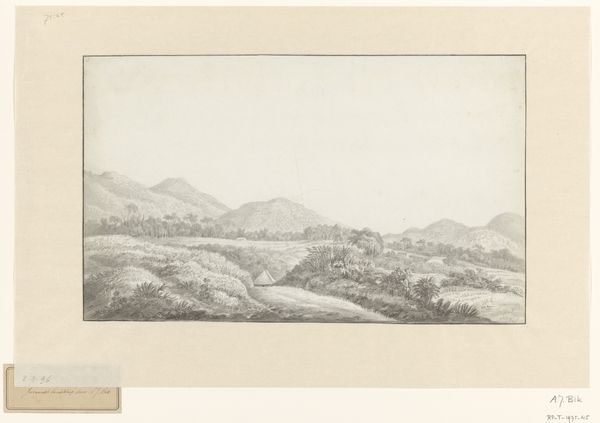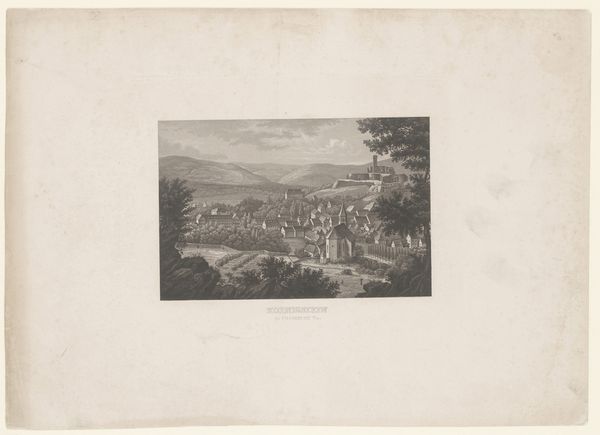
Berglandschap met op de voorgrond een pijprokende man aan het water 1833 - 1880
0:00
0:00
Dimensions: height 239 mm, width 319 mm
Copyright: Rijks Museum: Open Domain
Editor: Here we have "Mountain Landscape with a Man Smoking a Pipe in the Foreground by the Water," a print, likely an engraving, by Auguste Numans, created sometime between 1833 and 1880. It's a peaceful scene. How do you read this piece? Curator: As a materialist, I'm interested in the process of creating this print. Consider the labor involved in engraving – the skill required, the tools used, and the time it took to produce. Editor: It must have been painstaking work! What do you think it tells us? Curator: The very act of engraving elevates a landscape – a common subject accessible to all – through a meticulous process. It's no longer just a view, it becomes a commodity, available to those who could afford prints. Notice the detail in the mountains. Think about the materials used – the metal plate, the inks, the paper. Each choice reflects the social and economic conditions of the time. The Romantic style itself suggests a specific cultural perspective, glorifying nature but also controlling its representation through art production. What strikes you most about the landscape presented? Editor: I think it's the figure of the man smoking his pipe. He seems so…at ease. Curator: Precisely. That moment of leisure becomes an artifact captured and reproduced through industrialized means. It also shows how artistic production relies on collaboration - from the engraver, the publisher to, eventually, the consumer. How is this form of artistic consumption linked to the production of landscape? Editor: Wow, I hadn't considered all the layers involved. It makes you appreciate the work on a totally different level. I’ll be sure to investigate labor during the Romantic period. Curator: Indeed. Analyzing the materiality reveals the complex interaction between art, labor, and consumption.
Comments
No comments
Be the first to comment and join the conversation on the ultimate creative platform.
